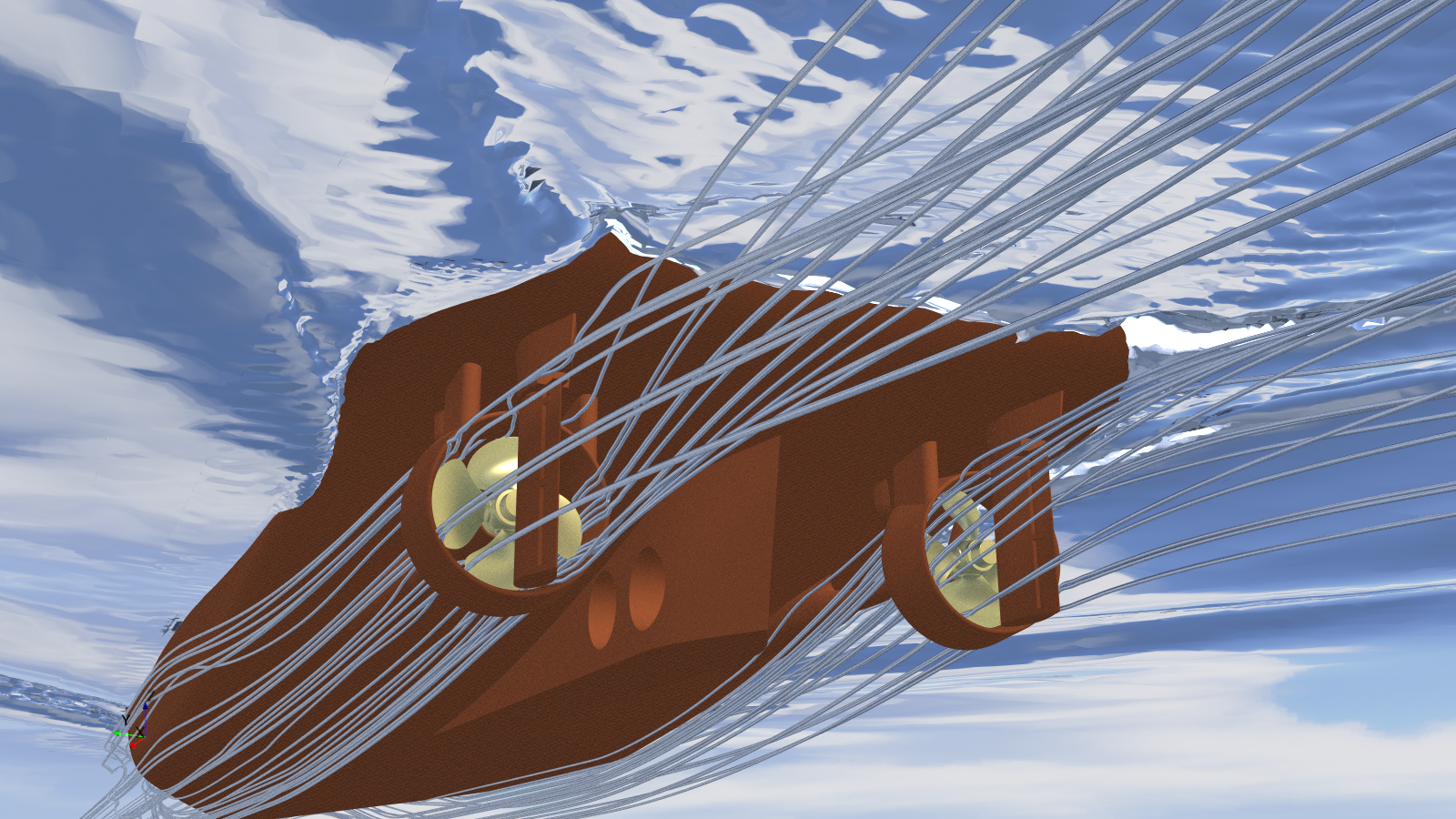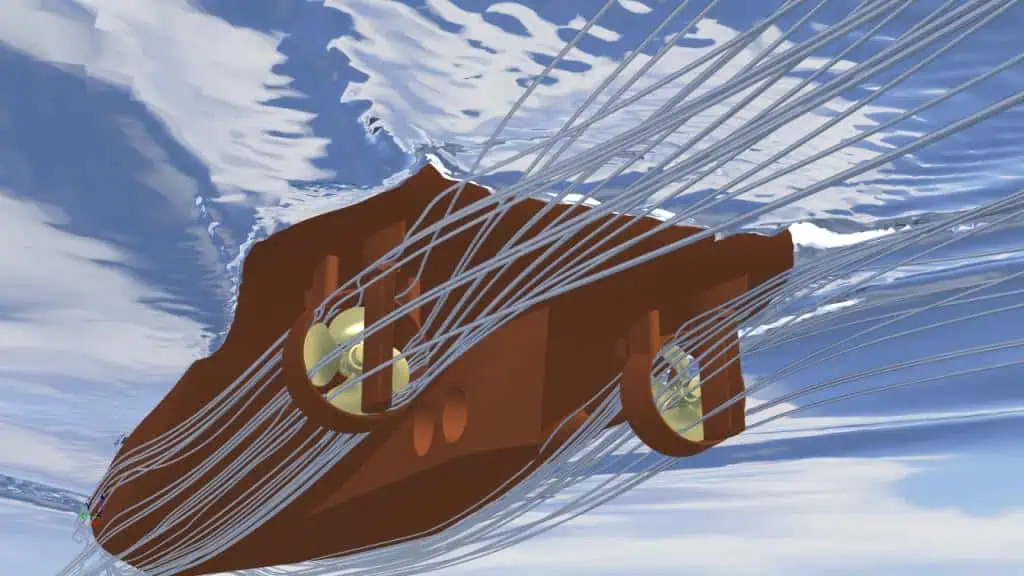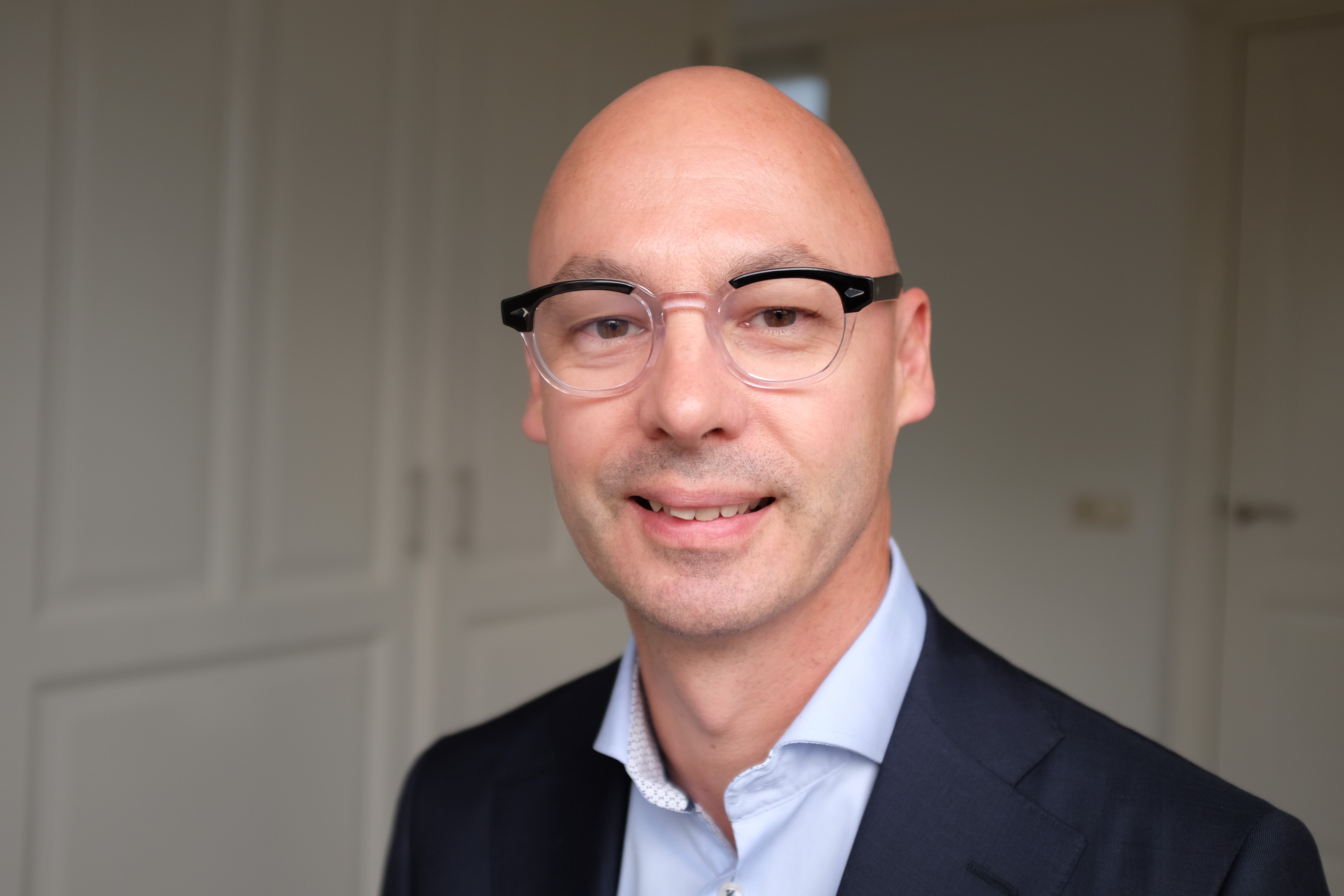Not all heroes wear capes – some are just very, very good at computational fluid dynamics and finite element analysis. Wärtsilä Propulsion’s Technology business line are experts in applying the sciences of hydrodynamics and mechanics to ensure customers get the optimal propulsion solution for their needs. It takes a great deal of expertise – and a cooperative mindset – but the results can save time, reduce costs and allow iterative efficiency improvements that achieve the optimal outcome. Gert-Jan van Goch, Director of Propulsion Technology, Wärtsilä explains how the science unlocks the results.
Computational Fluid Dynamics (CFD) deservedly has a reputation for being a highly complicated field, but the basics are simple enough to understand. “Computational means we use computers to make lots of calculations and analysis,” explains Van Goch. “The fluid part of CFD in our case is sea water –our work primarily concerns what goes on under the waterline – and dynamics means we’re looking at motion through that water. Our expertise in hydrodynamics and mechanical engineering is paired with our industry-leading knowledge of how to apply CFD to produce accurate predictions of vessel resistance and propulsion. Wärtsilä is leading the way with this – CFD requires detailed knowledge of which assumptions and equations to use for the specific problem at hand and no other company has quite our level of expertise.”
Hydrodynamics is not the only science that Technology specialises in; the team also includes experts that use the computational power at their fingertips to calculate mechanical strength and durability using Finite Element Analysis (FEA). “We use FEA to validate designs based on strength and deflections,” explains Van Goch. “One example is how we calculate the deformations of a gear box housing, and the shafts and gears within it, under load to see how these deformations influence the contact between the gear teeth. But FEA is not just for these critical systems – things like bolt connections, housing strength, contact pressure between components and equipment hoisting are all considered. FEA allows us to feed back if improvements can be made to design products that are lighter, cheaper or with improved performance, or to check whether proposed repair methods are impacting product performance.”
From models in basins to modelling on computers
“In the past propeller and ship designs were tested in model basins because there wasn’t enough computing power for detailed CFD and owners needed to see performance on a model-scale before committing to full-scale investment,” shares Van Goch. “Now we are in a transition period where we perform CFD calculations on both full-scale and model-scale and often model-scale tests are used to validate the CFD predictions – if the results match, the investment goes ahead. In the future, the industry will rely more and more on CFD calculations and fewer expensive model-scale tests will be carried out, possibly limited to manoeuvring and other special conditions. Eventually CFD will allow us to accurately simulate and predict full-scale ship performance in real-life operating conditions, saving money and time for owners and allowing iterative improvements that will increase efficiency.”

Supporting our colleagues to optimise efficiency
Technology’s role in Wärtsilä’s propulsion business is to support the other propulsion business lines – thrusters & propulsion controls, propellers & transmission, and waterjets – with their advanced scientific knowledge and computational power. “We test and validate new products towards the end of the design process, looking at their mechanical strength and hydrodynamic performance,” explains Van Goch. “For example, if we design a new thruster we use FEA to predict the structural loadings and CFD to calculate the hydrodynamical performance. Prediction of cavitation dynamics is often a crucial step to be included in the design process right from the beginning in order to avoid erosion and noise or vibration issues. Computing advances mean we’ve made big steps towards integrating all underwater auxiliaries into our calculations – previously you might have a perfect propeller and a perfectly designed ship, but together they weren’t optimal. Now we can ensure that they are.”
Propulsion products are expensive with long lead times, so prototyping is difficult – products need to be right first time with documentary proof of their effectiveness. “Our work in Technology not only makes our overall end products more efficient, it also allows us to make promises about propulsion’s role in decarbonisation because CFD shows us exactly how our products behave and how they will operate,” shares Van Goch. “Our computers run almost 24/7 to make all the calculations that are needed, and each and every year our CFD calculations become more comprehensive. Computing power is very important for our work – as computers get faster, we can build increasingly complex computational models and still have them calculated. In time, this will make CFD quicker and help to reduce costs, while allowing us to make ever more accurate models with FEA.”
“Each propulsion solution requires specific skills, so we have specialists for each area”
– Gert-Jan van Goch, Director of Propulsion Technology, Wärtsilä
The whole is greater than the efficiency of its parts
“Each propulsion solution requires specific skills, so we have specialists for each area working together for optimal results,” explains Van Goch. “For example, we have people working on CFD calculations to improve the reversing capabilities of our waterjets; for tunnel thrusters, we look at how the thrusters will interact with each other in operation and how this impacts performance. Many competitors look at individual thrusters, but in a cruise liner, for example, a row of tunnel thrusters will be mounted very close together, so hydrodynamically there is a lot of interaction – to achieve optimal efficiency it’s essential not to take them in isolation. The same goes for drilling vessels and offshore construction vessels with their multiple (retractable) thrusters. We also work with the propeller design team to help reduce noise, which is becoming more important from a regulation point of view as legislation is introduced to protect sea life. Again, we combine FEA and CFD analysis to get a better understanding of the complex interaction mechanisms between propeller and vessel, aiming to achieve lower noise levels, for example.”
Another way in which Technology is supporting Wärtsilä customers is the Wärtsilä OPTI-DP Engagement Tool, which is a good example of the company’s change of emphasis from product performance to vessel performance. “Our CFD capabilities give us the ability to accurately predict the complex interaction between multiple azimuth thrusters and, for example, a vessel’s hull or an oil platform. These dynamic positioning (DP) configurations are subsequently evaluated for numerous flow conditions, specifying forbidden zones by establishing the azimuth angle combinations of the individual thruster units in order to prevent failure situations. We have also transformed the way a DP system is configured to calculate the power required to deliver the thrust needed for safe and efficient operations, which means our customers can optimise the total power needed and select the exact engine to deliver this,” explains Van Goch.
In-house expertise ensures optimal results from external partnerships
Wärtsilä has recently started offering some innovative third-party solutions, such as Silverstream Technologies’ Air Lubrication System (ALS) and Kuribayashi Steamship Co.’s Gate Rudder, and the Technology business line is also involved in ensuring they are integrated optimally into customer vessels. “We are currently reviewing the performance of gate rudder technology and carrying out extensive calculations using CFD, both at 0 degrees and at a variety of rudder angles,” shares Van Goch. “ALS has a massive impact on vessel efficiency; in a new build you know the positions in the hull and we can help design the propeller taking ALS into account. If you are adding ALS as a retrofit it gives you the opportunity to adjust the existing propulsion system because you’ll need less thrust. Because of our capabilities in adjusting based on variations in vessel performance, we can optimise the propulsion system to match new technologies. Each and every modification has an influence on vessel performance and needs to be considered – the experience and computational skills of our team mean we’re very well placed to do this.”
Ready to solve current problems and optimise future solutions
Technology is in the DNA of Wärtsilä’s propulsion business, ensuring the product lines can offer solutions that provide optimal efficiency and performance to customers. The Technology team use their extensive CFD, FEA and mechanical engineering expertise to help solve complex problems, always looking at the whole system and the specific marine conditions to find the very best solution. “We help to develop and validate efficient propulsion solutions today while making steps towards improving propulsion efficiency in future,” concludes Van Goch. “The knowledge and experience of our heroes in Technology mean they’re always at the very heart of Wärtsilä’s efficient propulsion designs.”














